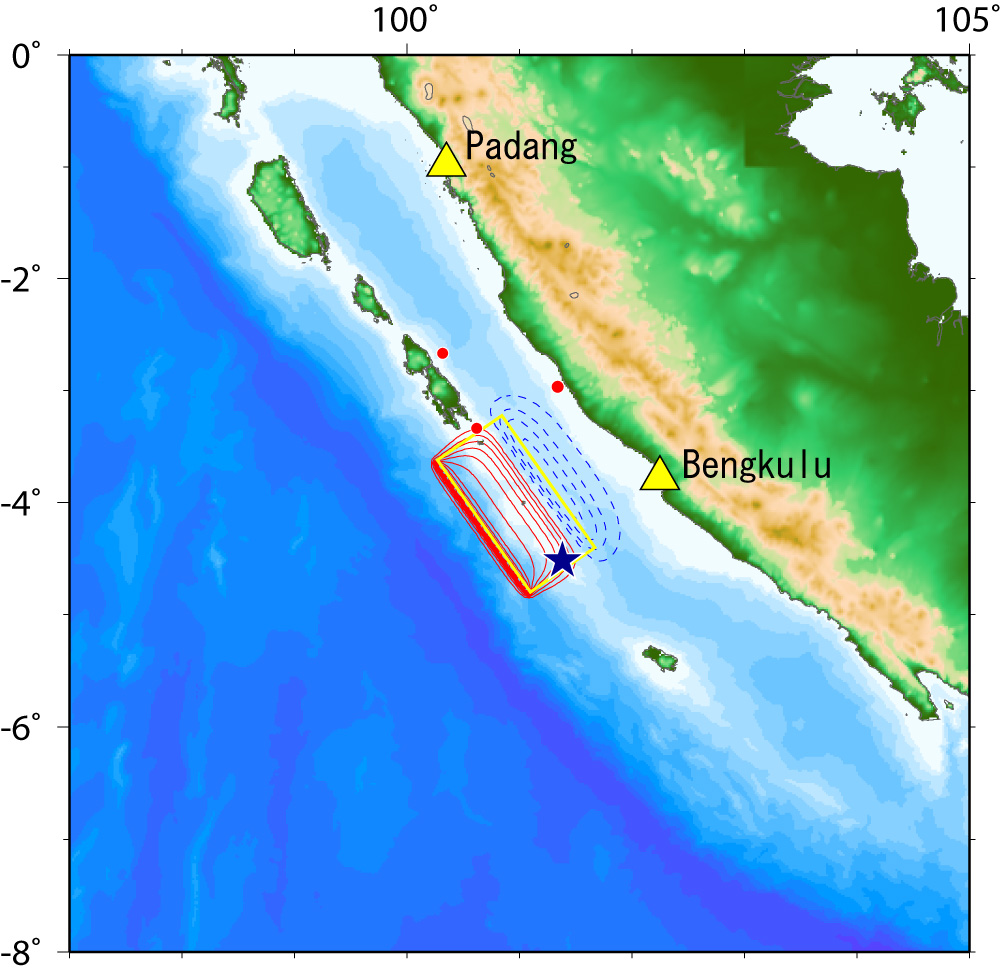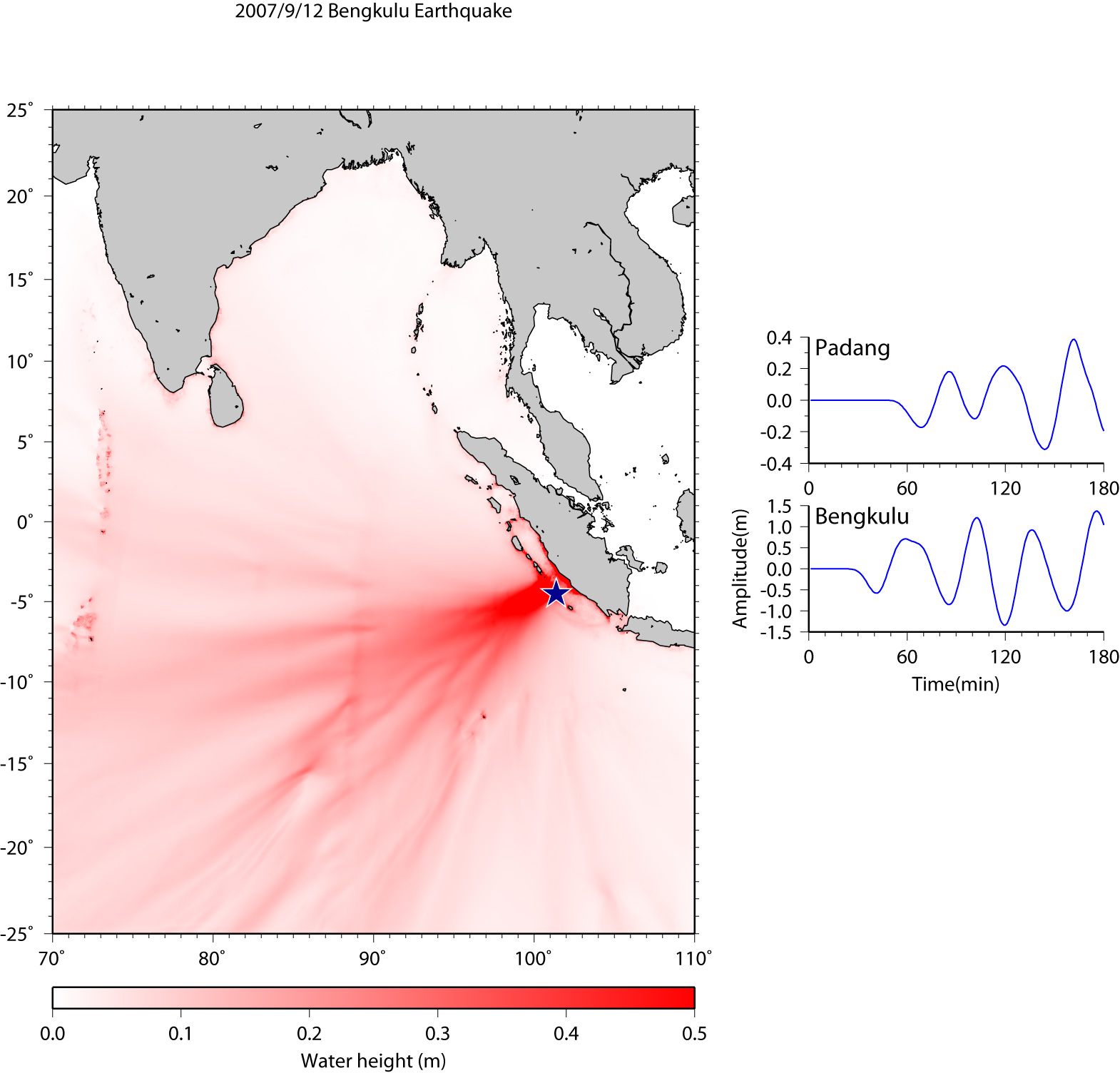| Bengkulu Tsunami on September 12, 2007 |
We have simulated the tsunami generated by the earthquake off southern sumatra (4.517°S, 101.382°E, M = 8.2 at 06:10:26 UTC according to USGS) on September 12, 2007. The assumed tsunami source is based on the aftershock distribution by USGS and scaling law, which is strike = 325º, dip angle = 15º and slip angle = 90º. The fault size is 160 km × 80 km. Top depth of the fault is 3 km. Average slip on fault is 5 m. The seismic moment is 2.56 x 10**21 Nm (Mw = 8.2) assuming the regidity of 4 x 10**10 N/m**2. As the initial condition for tsunami, static deformation of the seafloor is calculated for a rectangular fault model [Okada, 1985] using the source model. The used bathymetry data is General Bathymetric Chart of the Oceans (GEBCO) resampled with 2' grid interval. To calculate tsunami propagation, the linear shallow-water, or long-wave, equations were numerically solved by using a finite-difference method [Satake, 1995]. We can see the tsunami propagation in the Indian ocean (Fig. 3).

Fig.1 Tsunami Source Model
The red contours indicate uplift, while the blue contours indicate subsidence with the contour interval of 0.2 m. Aftershocks (red circles) distribution determined by USGS also shown.

Fig.2 Maximum Height of Computed Tsunami and Tsunami Waveforms

Fig.3 Tsunami Propagation (Click to start GIF animation)
The red color means that the water surface is higher than normal sea level, while the blue means lower.
| by Yushiro Fujii (IISEE, BRI) and Kenji Satake (GSJ, AIST) |
|
|
| References |
|
Okada, Y. (1985), Surface Deformation Due to Shear and Tensile Faults in a Half-Space, Bull. Seismol. Soc. Am., 75, 1135-1154. Satake, K. (1995), Linear and Nonlinear Computations of the 1992 Nicaragua Earthquake Tsunami, Pure and Appl. Geophys., 144, 455-470. |
Last Updated on 2007/9/13